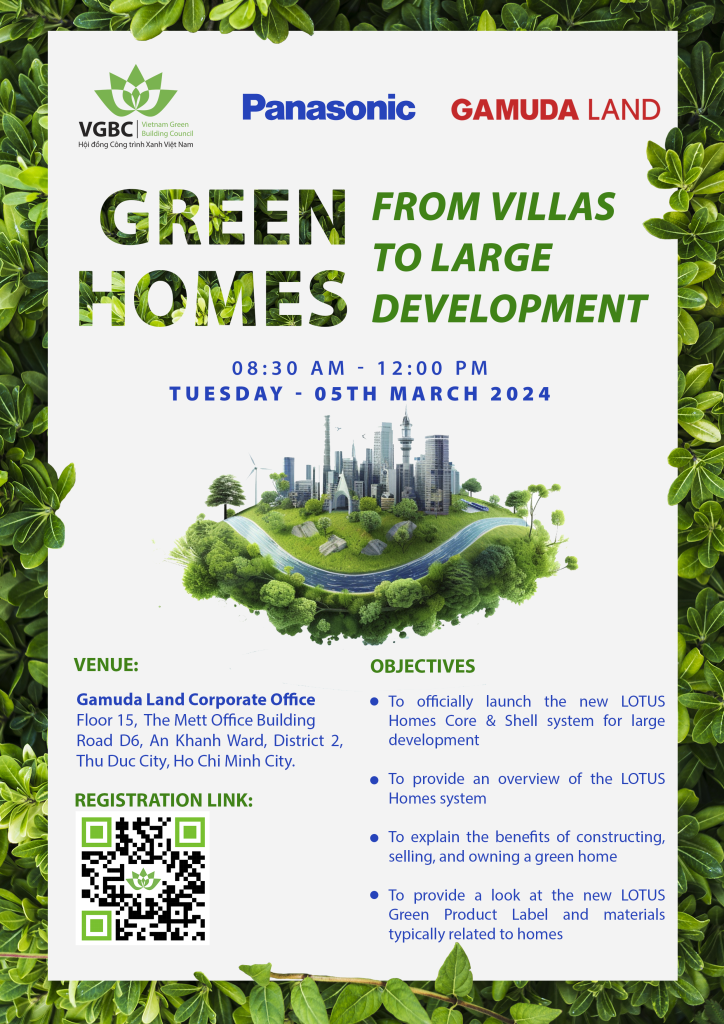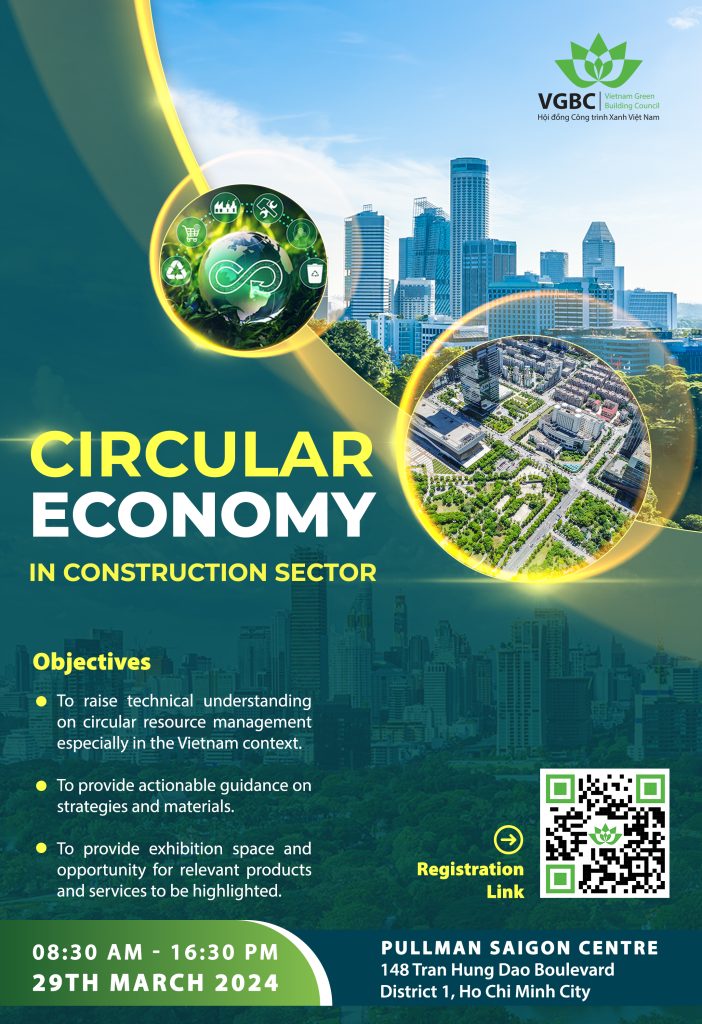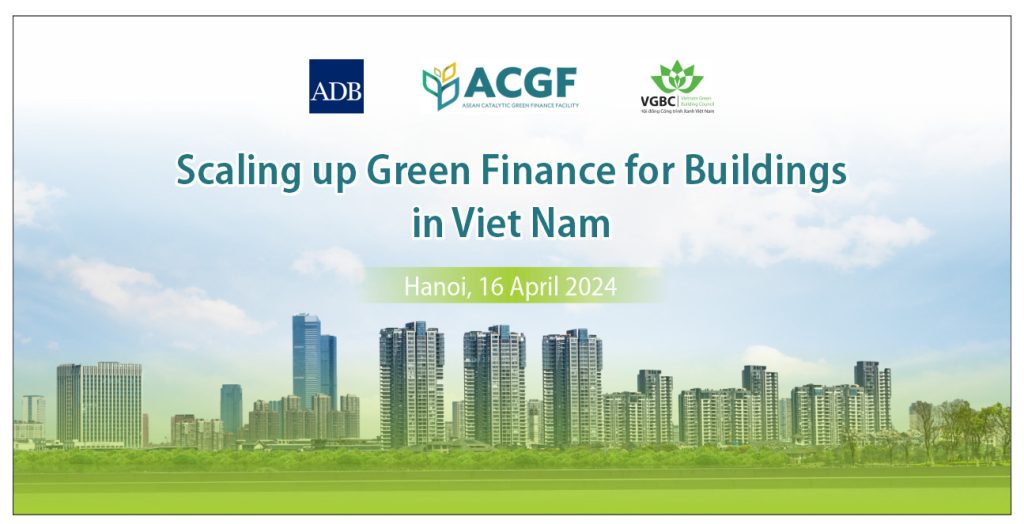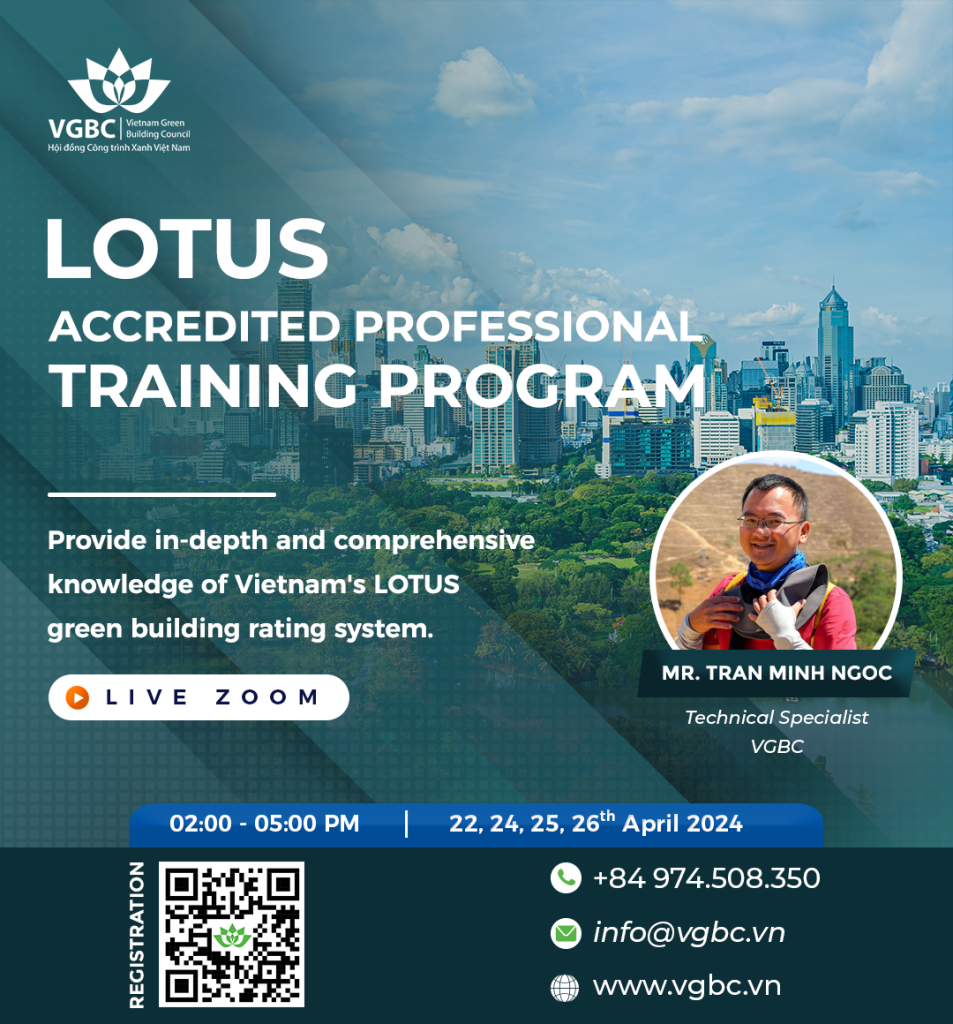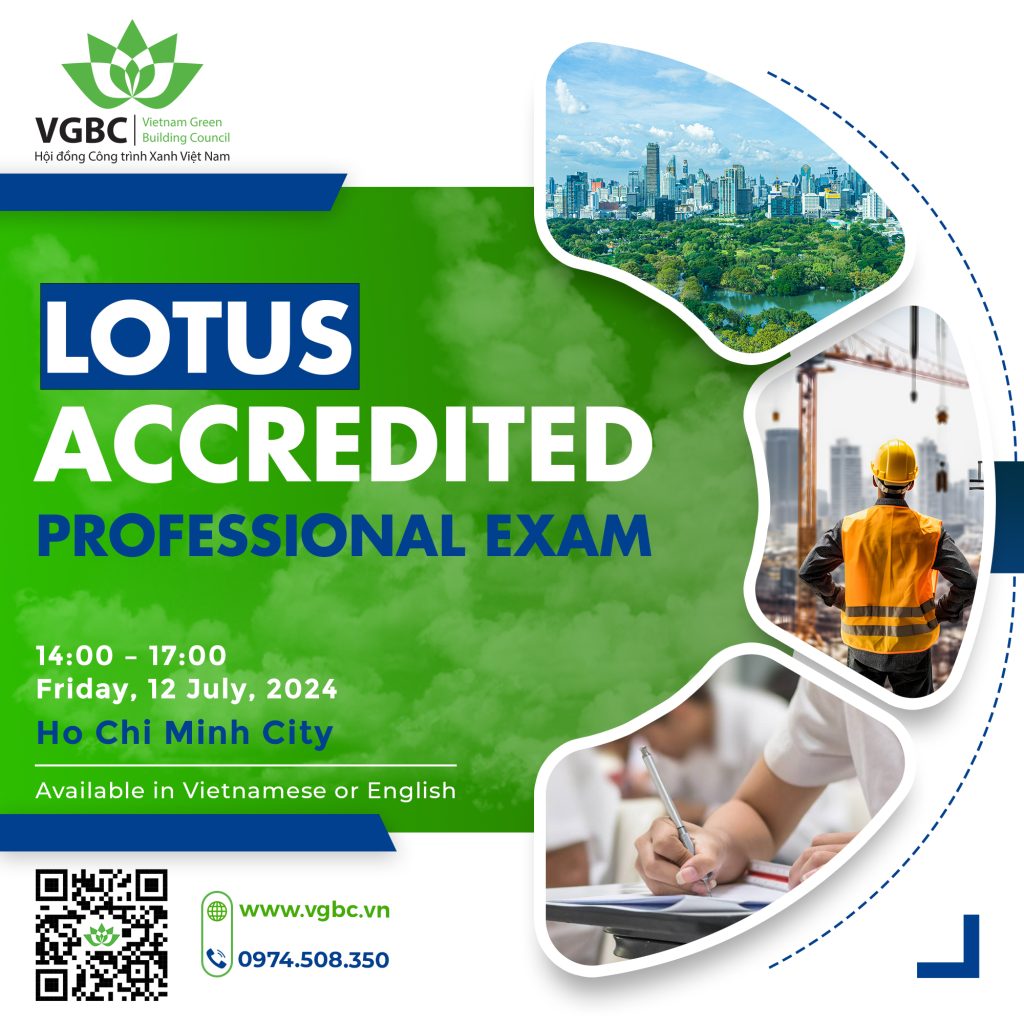
LOTUS is a green building rating system developed by the Vietnam Green Building Council (VGBC), an international non-profit organization and a member of the World Green Building Council. The first LOTUS system was released in 2010 and now it contains 7 systems that cover most of the building types: non-residential, multi-family residential, existing buildings, single-family homes, small buildings, and interior fit-out projects. LOTUS serves as a framework and a planning tool to create healthy, environment-friendly and cost-saving buildings.
LOTUS shares a number of similarities with LEED, Green Mark and other systems developed by other members of the World Green Building Council, including a point-based system, a list of prerequisites and credits with similar intents and requirements.
However, there are a number of important differences that were aimed to make LOTUS most suited for building projects in Vietnam. One such difference lies in the baselines, benchmarks and standards that LOTUS employs.
First, let’s take a look at some fundamental concepts in LOTUS.
Prerequisites vs. Credits vs. Points
Prerequisites are mandatory requirements that must be carried out for all projects applying for LOTUS. They ensure that all LOTUS Certified buildings achieve a minimum performance in terms of energy and water savings, limitation of environmental impacts, and healthy indoor environment.
Prerequisites must be met before certification is considered, they are not rewarded with any points.
Credits gather all the criteria that will lead projects to outstanding performance and make them unique. Projects can indeed target all the credits they want to pursue and, for each credit achieved, projects will earn points.
Points
The more points are earned through credits, the higher the benefits for projects. Projects with more points will further reduce their operational costs (energy savings, water savings, improved maintenance, etc.) and further improve the wellbeing of occupants.
The number of points earned determines the LOTUS Certification level of projects. There are four levels of certification benchmarked at 40% (LOTUS Certified), 55% (LOTUS Silver), 65% (LOTUS Gold) and 75% (LOTUS Platinum) of the total number of points available.

Figure: LOTUS Certification levels
Baseline vs. benchmark
Baseline and benchmark are used in LOTUS to compare the performance of a project with the conventional performance of buildings in Vietnam.
A benchmark is a reference value (energy consumption, water consumption, etc.) that has been set based on other similar buildings, national surveys, past performance of the building or target performance. For example, a benchmark can be a value of the typical water demand for irrigation purposes: 1.1 m3/m2 of landscape/year.
A baseline is a model inheriting some characteristics from the project (e.g. GFA, number of occupants, number of floors, shape, local weather conditions, number of operational days, etc.) but where conventional materials/equipment/appliances are considered instead of the materials/equipment/appliances installed by the project. The baseline model will be compared to the proposed model (or design model) which uses the materials/equipment/appliances installed by the project and a percentage of improvement over the baseline will be calculated.
LOTUS vs. building codes and standards in Vietnam
LOTUS NR references 22 Vietnamese and 6 International Codes and Standards. These references are included in LOTUS for their relevance to green building construction. Those which are legislated are mandatory for any construction project to follow in Vietnam. The VGBC recognises that it has a responsibility to ensure that LOTUS certified buildings meet these mandatory minimum requirements as well as raise awareness of such codes in Vietnam. To achieve this, LOTUS includes a maximum of Vietnamese building codes and standards as a basis for certification. The building codes and standards can be used:
- to set Prerequisite requirements (e.g. for wastewater treatment, LOTUS buildings need to comply with all the relevant wastewater regulations and standards such as QCVN 14:2008/BTNMT – National technical regulation on domestic wastewater or QCVN 28:2010/BTNMT – National technical regulation on Health Care Wastewater), or
- as references to calculate the improvements made by the LOTUS projects (e.g. Building envelope: projects can earn 1 point for every 10% reduction of building’s average OTTV compared to QCVN 09:2013/BXD – Vietnam Building Energy Efficiency Code (VBEEC) requirements)
- as requirements that need to be met to achieve a credit (e.g. Water recycled, reused or harvested: Recycled, reused or harvested water must comply at the point of delivery with minimum quality requirements of standards, such as QCVN 39:2011/BTNMT – National technical regulation on Water Quality for irrigated agriculture or QCVN 02:2009/BYT – National technical regulation on domestic water quality).
Where a Vietnamese standard exists, LOTUS references or uses it as part of credit criteria, however, the construction sector in Vietnam often relies on International standards as well. VGBC has consciously prioritised the use and awareness of local standards wherever possible. In a few credits, some international codes and standards are also mentioned in complement to the Vietnamese building codes and standards (ASHRAE 62.1, ASHRAE 55, NSF/ANSI Standard 350, etc.).

 Tiếng Việt
Tiếng Việt
